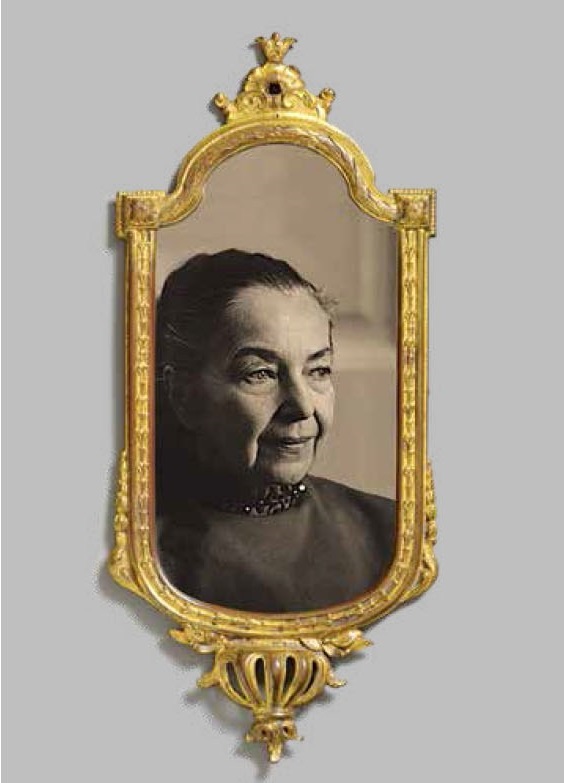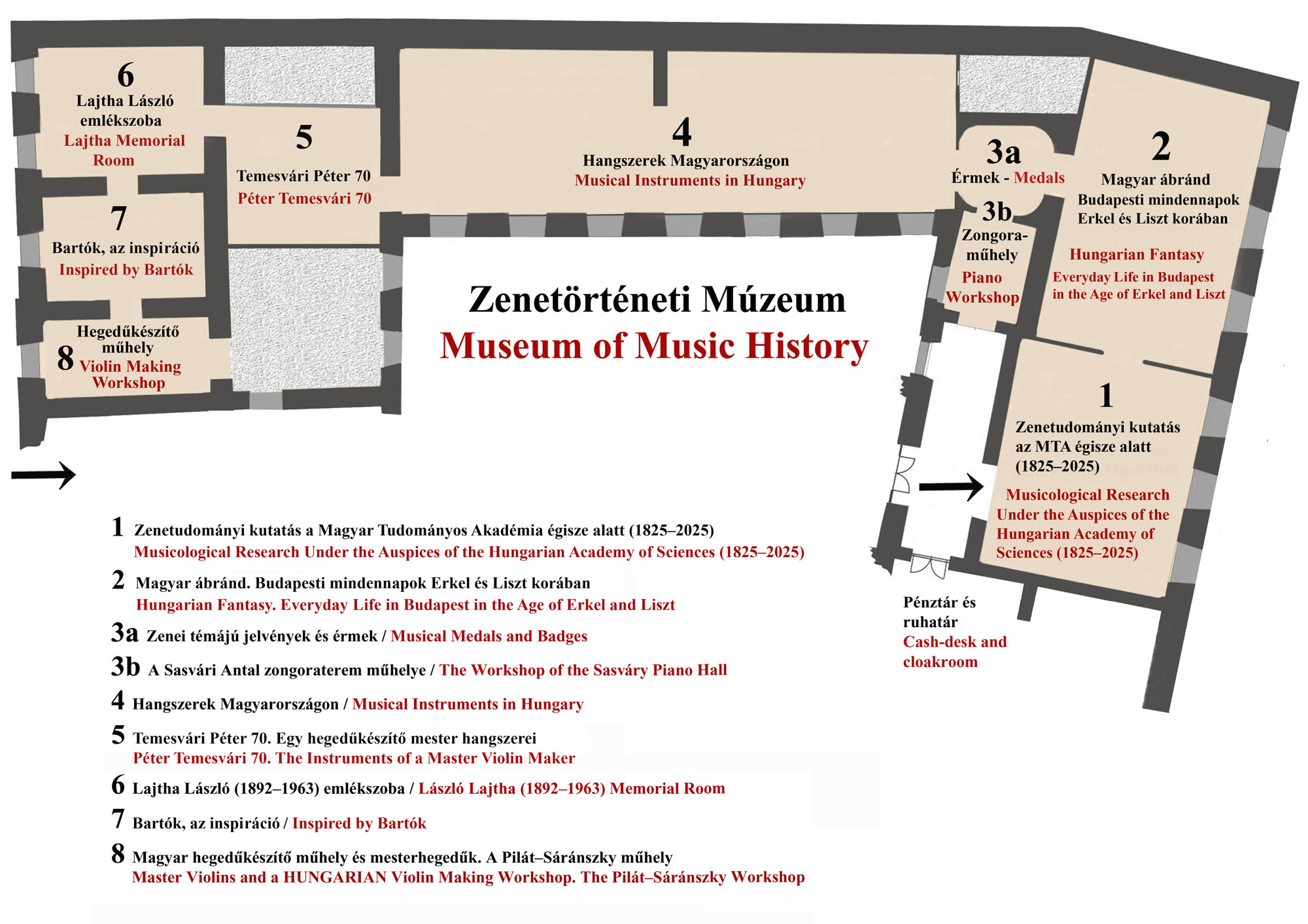Closed Exhibitions in the Museum of Music History
Witnesses of an Extraordinary Path of Life 
The legacy of Ditta Pásztory-Bartók at the Museum of Music History
Curators: Anna Baranyi, Katalin F. Dózsa
The exhibition is open: From 8 December 2016 to 17 September 2017
In her will, Ditta Pásztory left a part of her estate to Krisztina Voit (1940–2010), the granddaughter of Béla Bartók’s sister. In August 2006, Krisztina Voit gave this estate – with the exception of the letters written by Bartók to Ditta Pásztory – as a long-term deposit to the Institute for Musicology, RCH, HAS. Eszter Voit, the heiress of Krisztina Voit, maintained the deposit.
In the first room we present the period from the late 19th century up until 1960 by means of a varied and diverse material. Of particular value are Bartók’s personal belongings, the wall hangings executed with folk embroidery which decorated their former residence. Certain items from Ditta Pásztory’s wardrobe evoke the fashion of their age.
From the 1960s, Ditta Pásztory-Bartók gave concerts both in Hungary and abroad; she also attended a number of representative events. The elegant costumes, shoes, and various accessories used by Ditta during her concert performances accompanied her artistic career, thus being of particular importance. In addition to their obvious personal aspects, the objects featured in our exhibition are also characteristic of the Hungarian fashion history of the period.
Ditta Pásztory-Bartók (Rimaszombat, 1903 – Budapest, 1982) was a student of Béla Bartók at the Budapest Academy of Music during the academic year 1922/23. They married in the summer of 1923. In 1924 their son Péter was born and subsequently she continued her studies with her husband at home. Their first appearance together took place in 1938 in Basel and consisted in the first performance of Bartók’s Sonata for Two Pianos and Percussion. Afterwards they repeatedly played works for two pianos. From October 1940 they had lived in the United States. Following Bartók’s death (1945), Ditta returned to Hungary in 1946. For a long time she lived in retirement, then during the 1960s she began to give concerts. Her favourite concert programmes were focused on works for two pianos and her partners were Mária Comensoli and Erzsébet Tusa. In 1963 she was distinguished with the title “Meritorious Artist,” in 1978 she received the Order of the Flag of the Hungarian People’s Republic. According to her will, the annually awarded Béla Bartók–Ditta Pásztory Prize was established in 1984.
Curators: Anna BARANYI, Katalin F. DÓZSA, Collaborator: Zsófia BORZ, László GOMBOS
Restorer: Mária KRALOVÁNSZKI, Péter GERŐ
Pictures of the opening ceremony:


